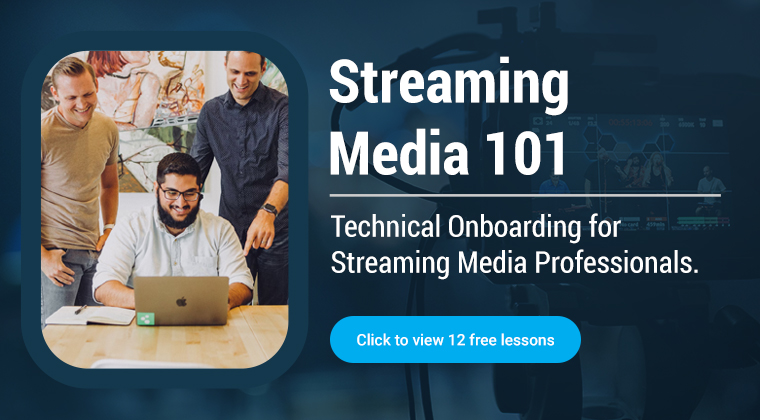Last week, Netflix admitted that they artificially throttle the data rate of videos transmitted over AT&T and Verizon cellular networks to limit bandwidth consumption and the associated overage charges. Netflix doesn’t throttle video streams transmitted on other cellular networks like T-Mobile and Sprint that don’t charge for overages. The story was broken by the Wall Street Journal, who raised issues …
Read More »Webinar: Simplifying Encoder Purchase and Configuration Decisions with Real Time Quality Metrics
I’m participating in a webinar with IneoQuest on Thursday, March 31 at 2:00 PM EST as part of their launch of a new product with live, non-referential quality metrics. The bottom line is that if you’re comparing real-time encoders to make a purchase decision, or configuring live encoders you already have, you can gauge the quality in real time, while …
Read More »Editing Technique: Restoring A/V Sync in Premiere Pro
Executive Summary: A common problem with footage created using iPhones, screencam tools, Wirecast, and Skype is a loss of A/V sync when importing the video into Premiere Pro. This video tutorial presents a simple fix using Handbrake. You can read a tutorial on the Streaming Media Producer Website here. Overview and discussion: Many sources of video, like mobile phones, screencam …
Read More »Encoding Brief: Phase Out Low Quality Streams in Your Encoding Ladder
Executive Summary: Now might be the time to consider phasing out the lowest quality streams in your encoding ladder to reduce encoding and storage costs. Check your server logs to determine consumption of these streams before doing so. Overview and Discussion: All streams in your adaptive group cost money to encode, store, and administrate, even low-quality streams. A recent discussion …
Read More »Encoding Brief: The Benefit of B-frames
Executive Summary: B-frames increase compression efficiency, particularly at lower bitrates. However, not all video encoders deliver the requested number of B-frames when encoding using default parameters. Telestream Switch is a software program that identifies B-frames in encoded streams, and computes the overall B-frame percentage. Compressionists seeking the most efficient streams should acquire Switch and test their streams. If B-frames are …
Read More »Preliminary Survey Results – CBR, VBR and Capped CRF – $100 Amazon Gift Card Incentive
On January 13th, 2016, I launched a survey to determine the bitrate control techniques most commonly used by streaming producers. Some preliminary results are in, but the number of respondents is too small to draw any conclusions. I wanted to publish the data to stimulate additional interest, and also announce that I am sweetening the pot with a $100 Amazon gift …
Read More »Survey: CBR, VBR, or Other for ABR Streaming
The recommended bit rate control technique for VOD files produced for adaptive streaming is one of the most fundamental decisions encoding professionals make, but in my view also one of the most confusing. If you scan the white papers on the topic, most recommend using constant bit rate (CBR) encoding to simplify the stream selection process. On the other hand, …
Read More »Survey Results In: DASH Squeaks Win over HLS
Late last year I ran a survey asking respondents to choose whether DASH or HLS was the best ABR format going forward. The poll results are in and are shown below. Basically, a small majority preferred DASH over HLS. The reasons why are even more illuminating, and are presented below the survey results. “Not sure why i wouldnt cover both …
Read More »TN2224 is Dead. Welcome to the New Era of Content-Aware Encoding
The Netflix blog entitled, Per-Title Encode Optimization, boldly declares that “to deliver the best quality video to our members, each title should receive a unique bitrate ladder, tailored to its specific complexity characteristics.” In a world where many companies simply deploy Apple’s recommendations from TN2224 without modification, it’s a breath of fresh air. The blog post goes on to detail …
Read More »Webinar: Content-Aware Encoding-Applying Lessons Learned from Netflix’s Per-Title Optimization Blog Post
Webinar on Content-Aware Encoding; January 26, 2016 at 2:00 PM EST. The ideal encoding ladder accomplishes two things-it creates great visual quality and uses the optimum amount of data, keeping audiences and finance happy at the same time. But what is the ideal encoding ladder? At one extreme, in its post Per-Title Encode Optimization, Netflix recently blogged about how each …
Read More » Streaming Learning Center Where Streaming Professionals Learn to Excel
Streaming Learning Center Where Streaming Professionals Learn to Excel



